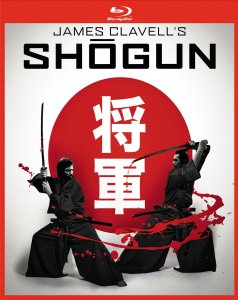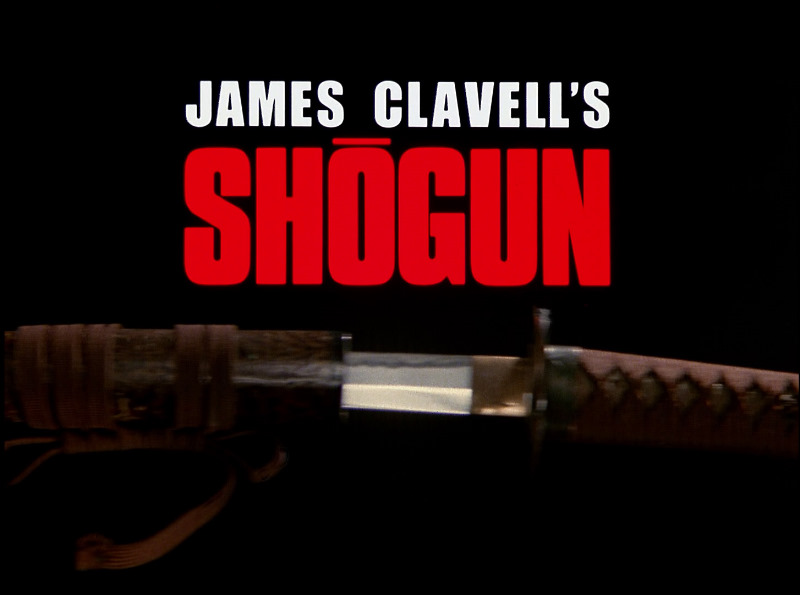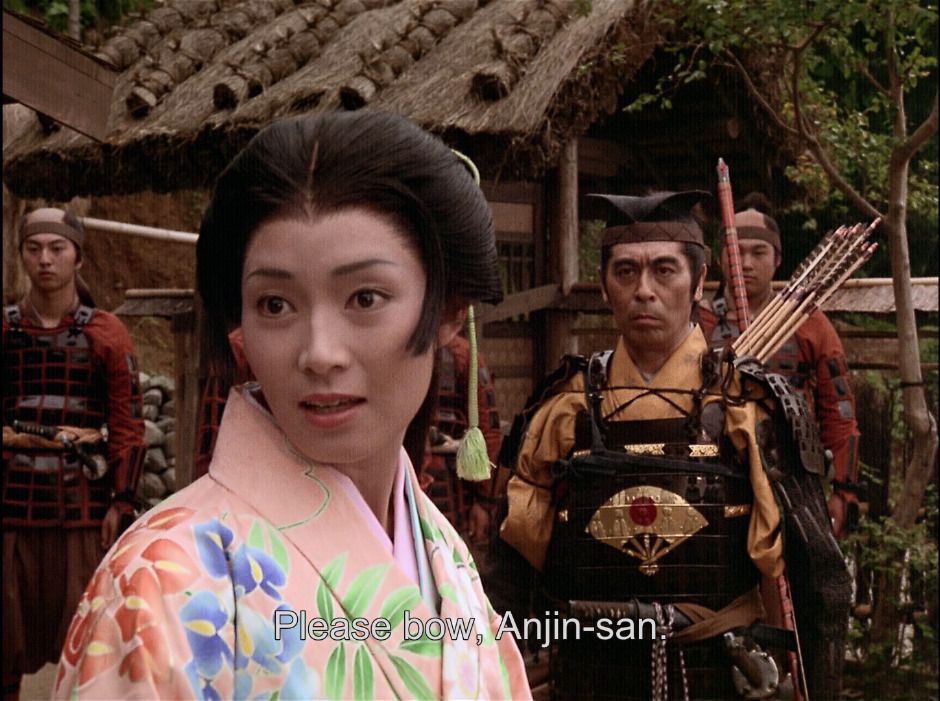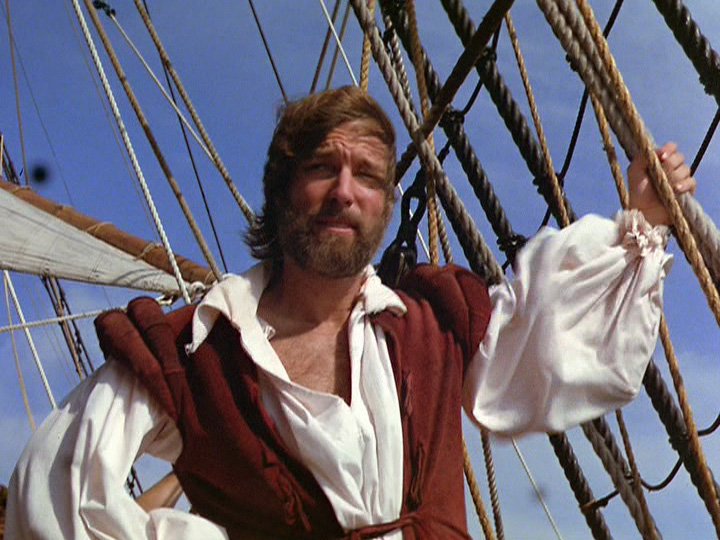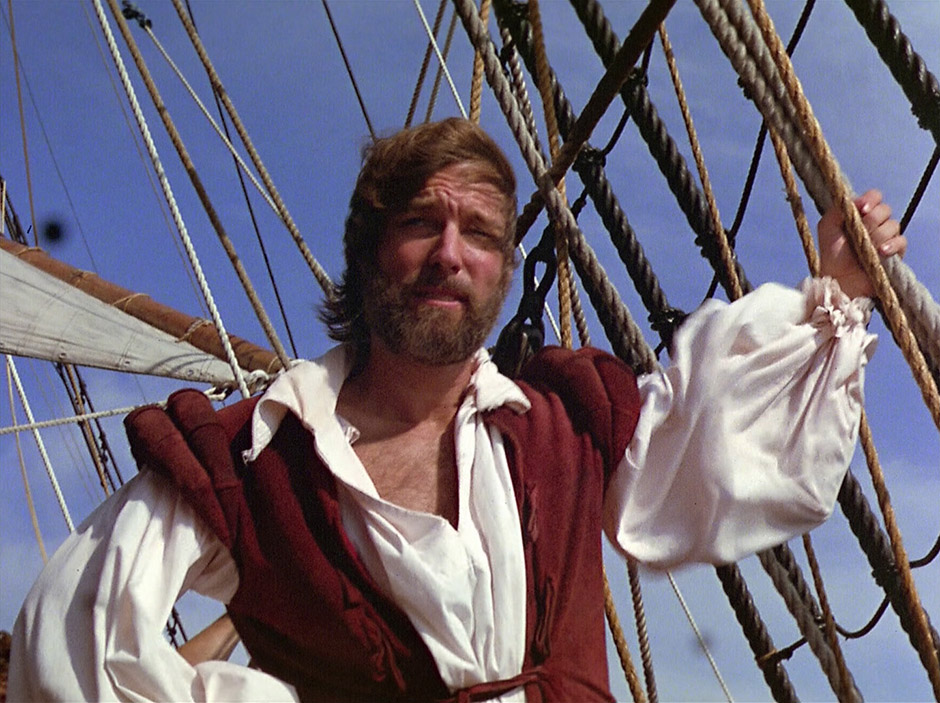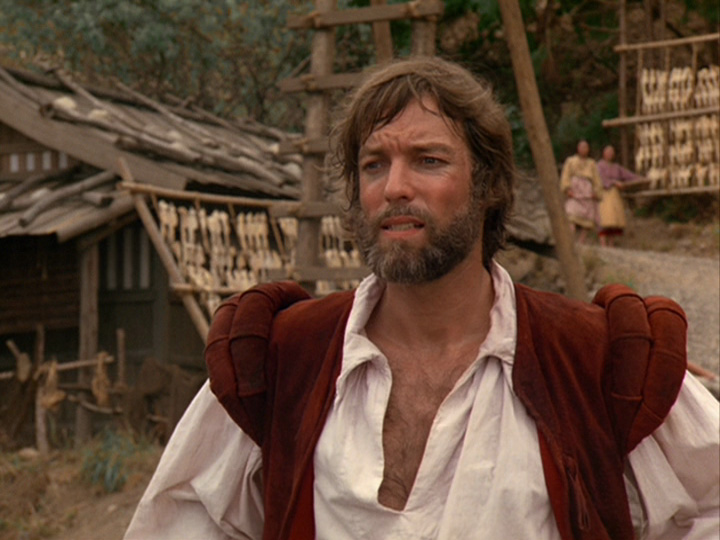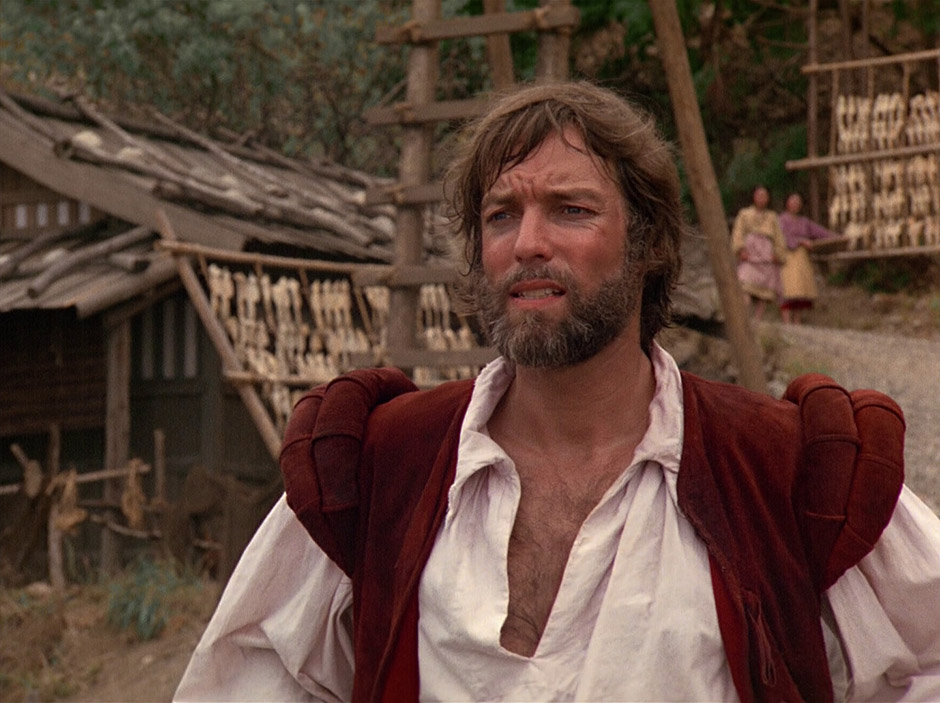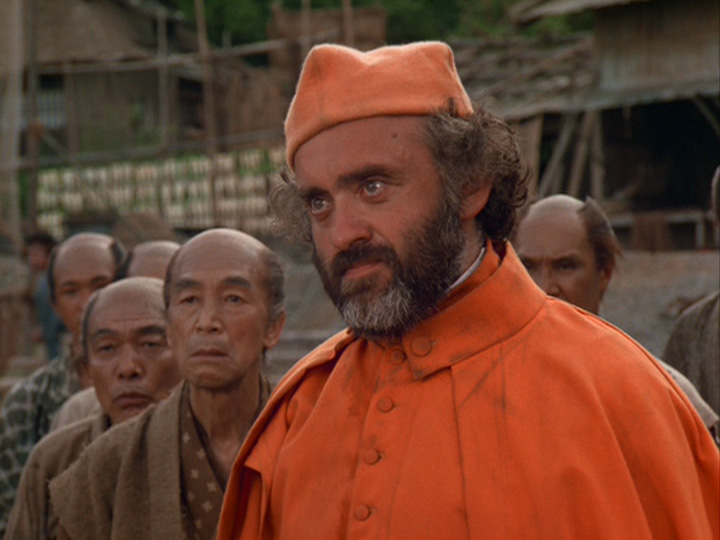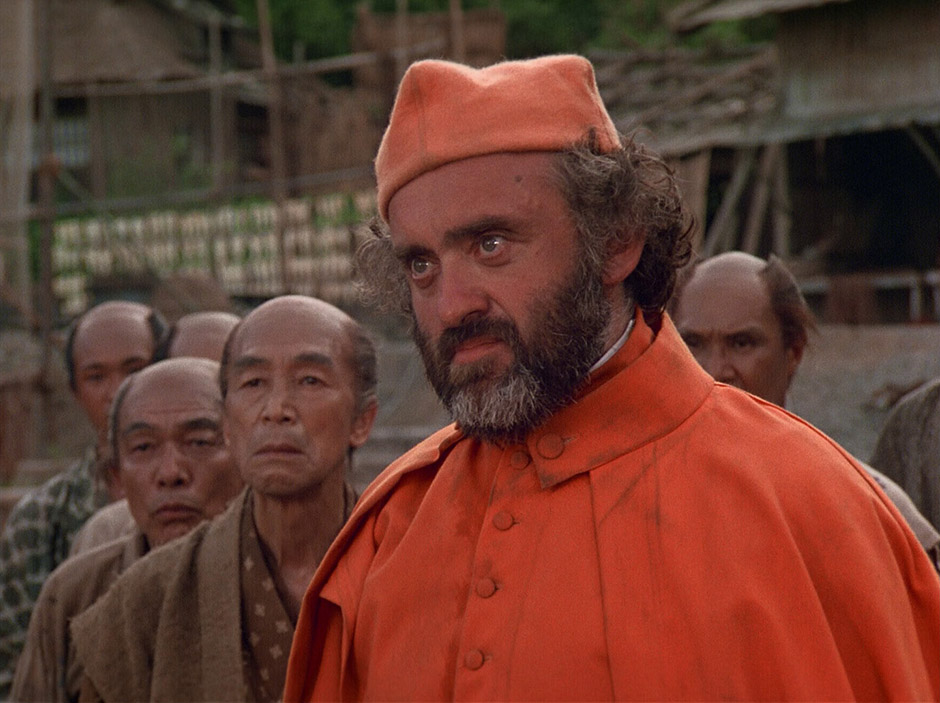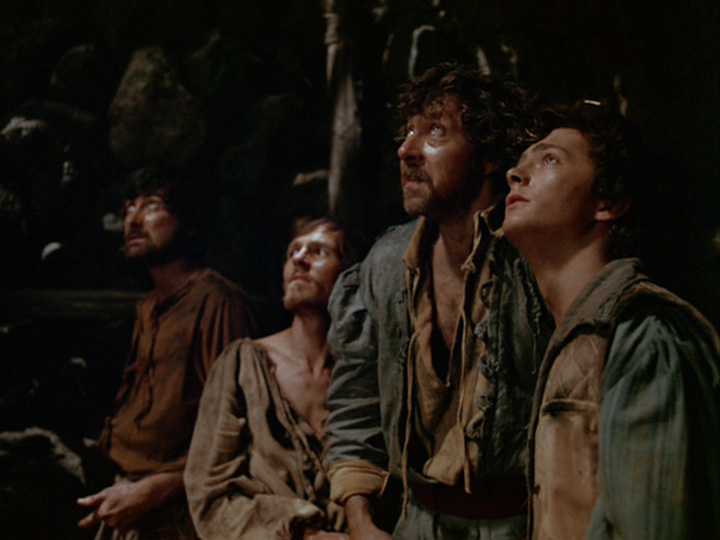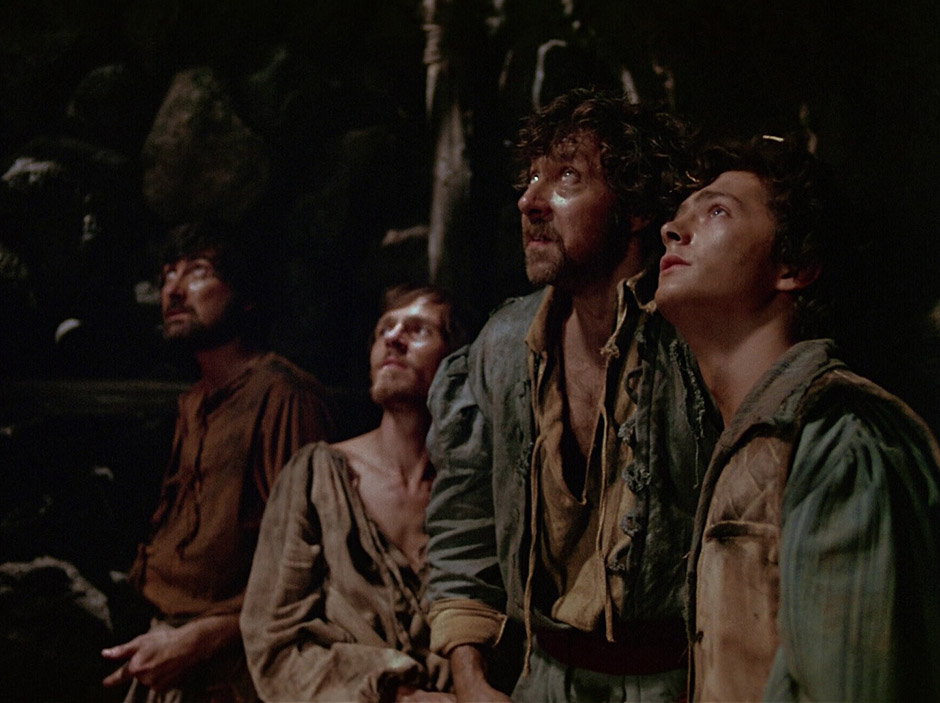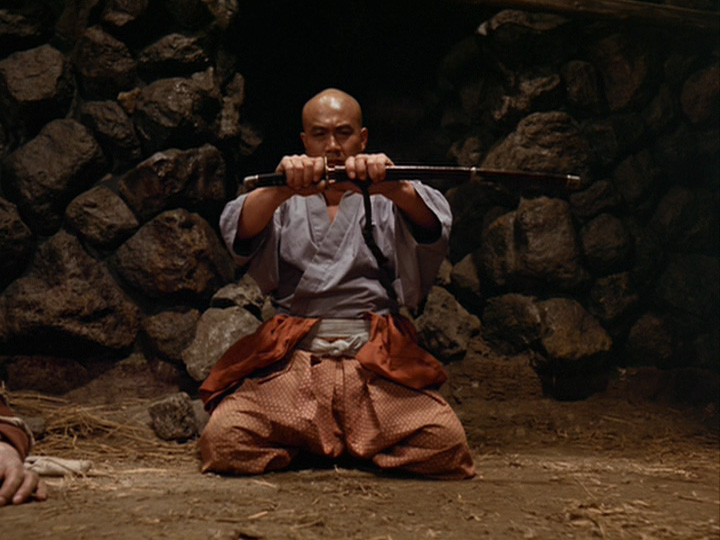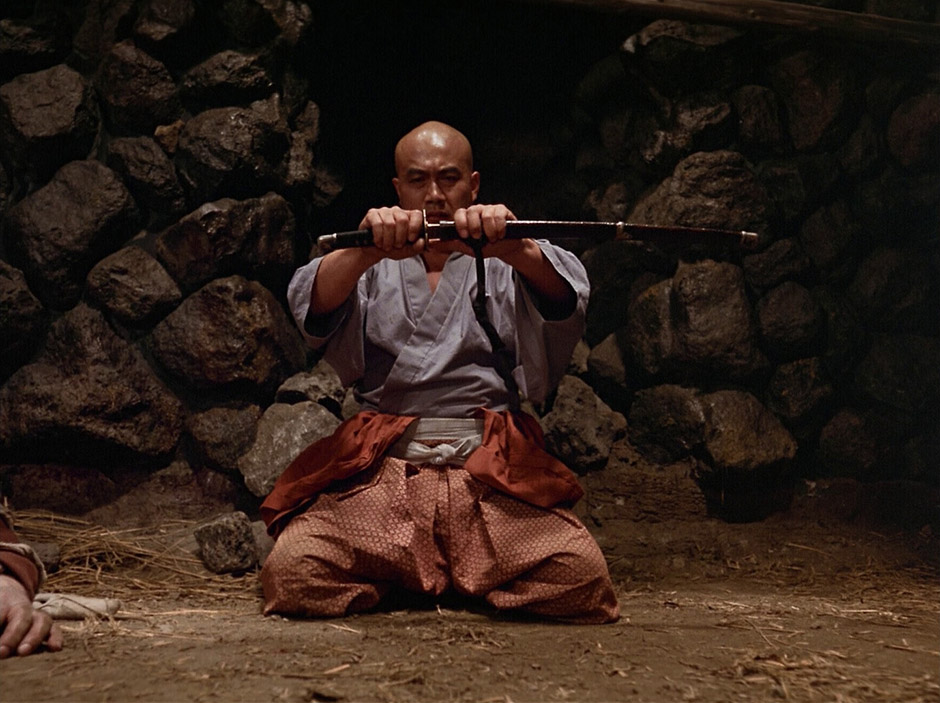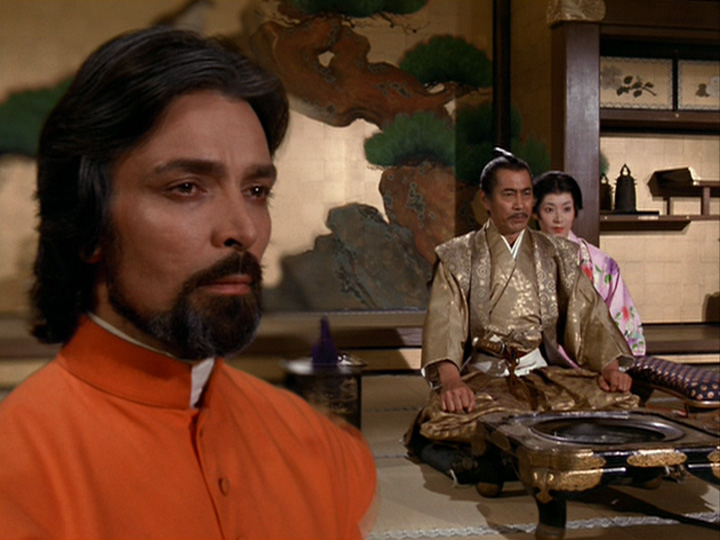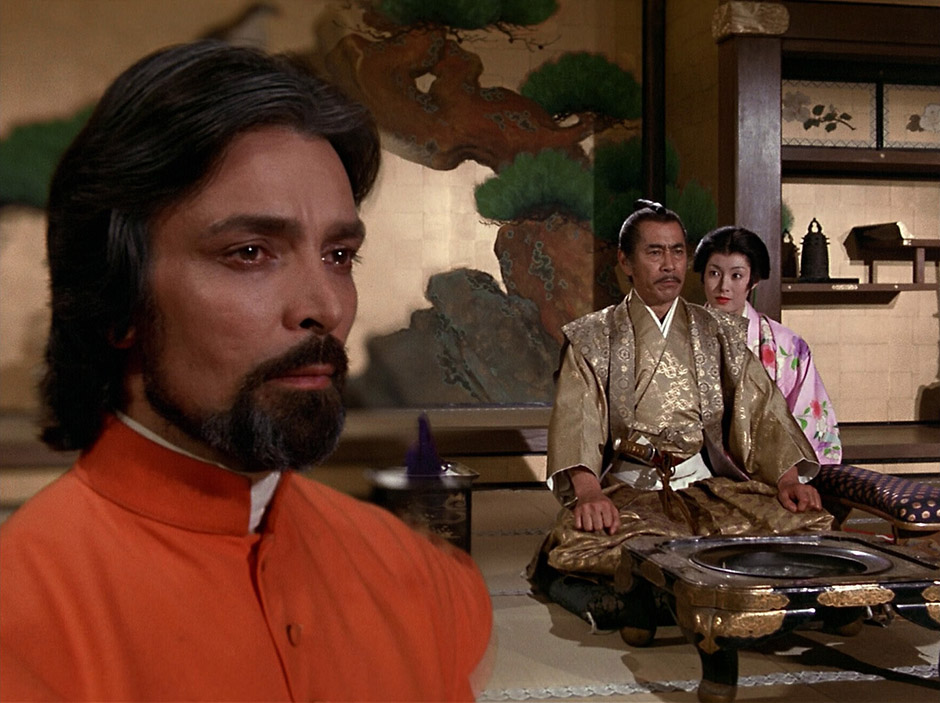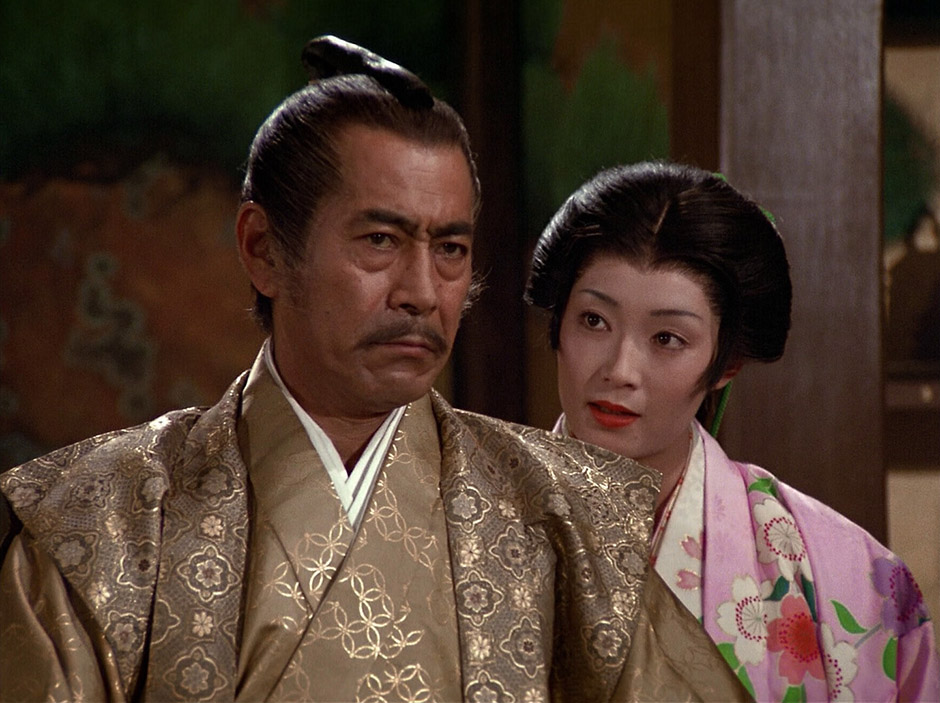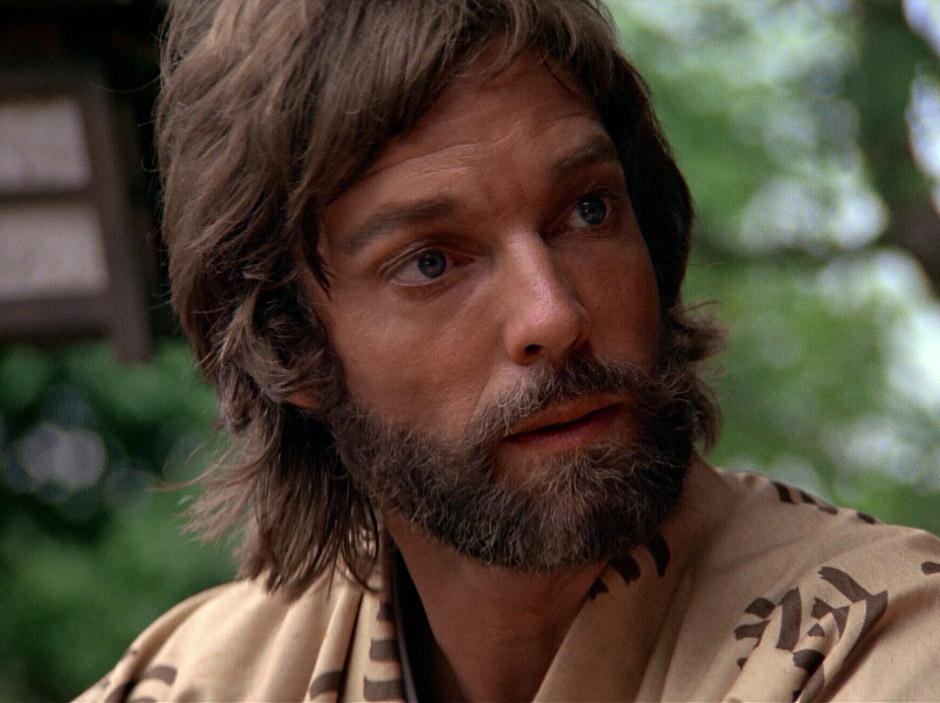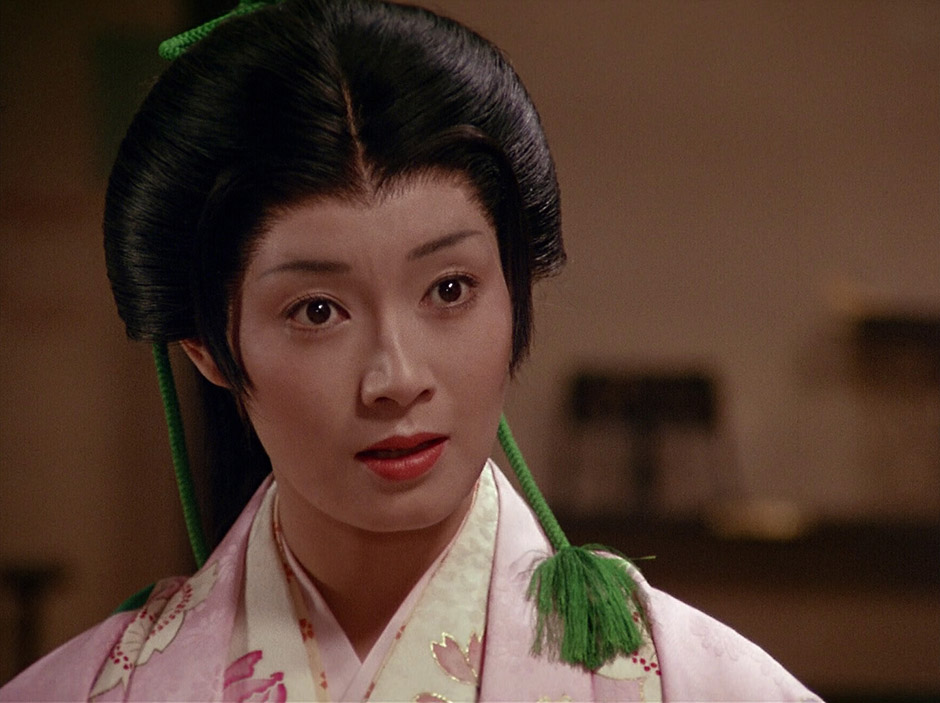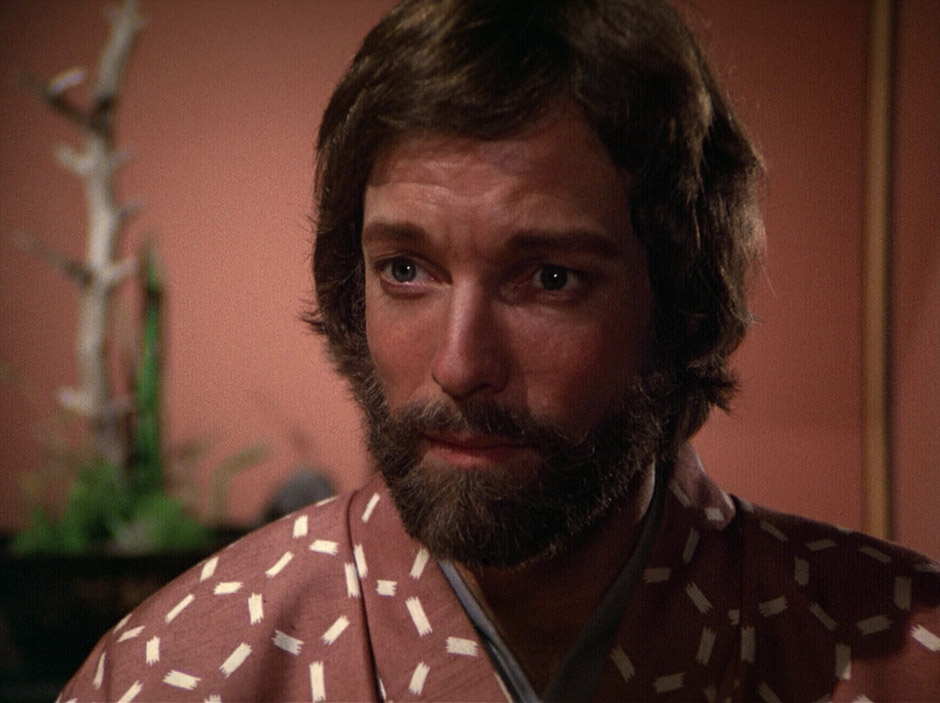Description:
John Blackthorne, an English ship pilot, whose vessel
wrecked upon the Japanese coast in the early 17th century is
forced to deal with the two most powerful men in Japan in
these days. He is thrown in the midst of a war between
Toranaga and Ishido, who struggle for the title of Shogun
which will give ultimate power to the one who possesses it.
***

Journey to the brutal, thrilling world of 17th century
feudal Japan with SHŌGUN, the unforgettable adventure
based on the bestselling novel from James Clavell. Winner of
three Golden Globes and three Emmys, the three-part
miniseries starring Richard Chamberlain arrives for the
first time on stunning Blu-ray July 22 from CBS Home
Entertainment and Paramount Home Media Distribution. The
sweeping story of love and war follows John Blackthorne
(Chamberlain), an English navigator shipwrecked off the
coast of Japan. Rescued, he becomes an eyewitness to a
deadly struggle involving Toranaga (Toshiro Mifune), a
feuding warlord intent on becoming Shogun – the supreme
military dictator. At the same time, Blackthorne is
irresistibly drawn into the turmoil and finds himself vying
to become the first-ever Gai-Jin (foreigner) to be a made a
Samurai Warrior.
The Series: 9
Critical Reception [Wikipedia]:
The miniseries was sparked by the massive success of the
television miniseries Roots (1977) that had aired on the ABC
Network in 1977. The success of Roots, as well as the
critically acclaimed TV miniseries Jesus of Nazareth (1977),
would spawn many miniseries onward through the 1980s. Shōgun,
which aired in 1980, also became a highly rated program and
continued the wave of miniseries over the next few years
(such as North and South and The Thorn Birds) as networks
clamored to capitalize on the format's success.
The success of the miniseries was credited with causing the
paperback edition of the novel to become the best-selling
mass-market book in the United States, with 2.1 million
copies in print, and increased awareness of Japanese culture
in America. In the documentary The Making of 'Shōgun', it is
stated that the rise of Japanese food establishments in the
United States (particularly sushi houses) is attributed to
Shōgun. It was also noted that during the week of
broadcast, many restaurants and movie houses saw a decrease
in business. The documentary states many stayed home to
watch Shōgun—unprecedented for a television
broadcast.
The Japanese characters speak in Japanese throughout, except
when translating for Blackthorne. The original broadcast did
not use subtitles for the Japanese portions. As the movie
was presented from Blackthorne's point of view, the
producers felt that "what he doesn't understand, we
understand.” Rotten Tomatoes gives the series a critic
rating of 80%.
Reviews:
Time Out London:
Startled blue eyes above silky beard, Richard Chamberlain in
a kimono looks more like an actor on his way to the bathroom
than a grizzled English seafarer, cast ashore in 17th
century Japan, where he turns samurai and becomes
romantically and actively involved in a violent political
intrigue. Based on James Clavell's huge novel, Shogun
was originally a 10-hour TV mini-series. Shamefully hacked
down to 151 minutes (still a yawning long haul), the plot
has been rendered action-packed but utterly
incomprehensible. Though production credits and cast point
to a lively synthesis of oriental/occidental interests, the
end result reduces the complex moral codes of feudal Japan
to an inexplicable death wish. The threat of harakiri
follows Chamberlain's illicit hanky-panky with the Lady
Mariko (Shimada) as surely as day follows night, and yet
again that rising sun blobs onto the screen like a pulpy
tangerine.
eFilmCritic.com -
One of the best things about a quality mini-series is quite
simply that of sheer volume; if you're having a great time
with the first hour of Shogun, lucky you! There's
over eight more hours to enjoy! And you'll have to search
far and wide to find a made-for-television production that
boasts this sort of quality. The costumes, the set designs,
the majestic Maurice Jarre score, and the obvious respect
for even the smallest cultural detail of 17th century Japan
combine to create an entirely engrossing, not to mention
lengthy, tale. That the viewer is not even offered subtitles
when the Japanese characters speak is an indication of the
respect the filmmakers have for their audience; those who
are paying attention simply won't need the subtitles in
order to follow the drama. With his performances in Shogun,
The Thorn Birds (1983), and a handful of other (less
celebrated) mini-series, Richard Chamberlain became known as
the king of multi-chapter TV dramas, and his work here
represents some of the finest of Chamberlain's career. And
of course you can expect nothing but a truly regal presence
when you have Toshiro Mifune as your intensely noble feudal
warlord. - Scott Weinberg
PopMatters.com:
Everything about Shogun is big and impressive, from its
running time (nine hours) to the large cast, superb location
shooting, and obvious care taken with the sets and costumes
(the castle sets were constructed using traditional peg and
groove methods; every kimono was unique). The story is set
in a crucial period in Japanese history as nearly 150 years
of civil unrest were about to come to an end with the
establishment of the Tokugawa shogunate in 1603. . . Despite
being filmed entirely in Japan and featuring an impressive
cast of Japanese actors. . . Shōgun is concerned primarily
with Blackthorne’s story while the distinguished Japanese
cast is reduced to being supporting players in the heroic
tale of a white guy making good in a foreign land. . . [and]
while the Japanese characters behave as if they were living
in the period of the story, Blackthorne appears to have
popped out of a time machine, because his values are more
typical of the late-20th century than the early-17th. -
Sarah Boslaugh
LensView
1980 - The year I bought my first VCR - a Sony Betamax. I
wanted it expressly to record this series, which for reasons
I have since forgot, imagined would be a keeper. And so it
was, allowing me to watch the entire series again about the
time that it went into syndication, which loped off a couple
hours of program and substituted Jane Alexander for Orson
Welles as Narrator. Eventually, my copy became unwatchable -
not from overplay, as it happened, but from underuse. Much
the same fate awaited more titles in my library than I care
to admit. It was not 2003 that Paramount brought out a
proper DVD of the original broadcast plus some pretty good
bonus features, all of which are on this Blu-ray edition as
well, though, sadly, not upgraded to HD in any way. The DVD
image was good and the sound quality passable, no worse than
I remembered my Beta copy to be, but the new Blu-ray, while
apparently struck from the same source as the DVD, betters
it in small ways which, accumulatively, make for a more
satisfying viewing experience.
There was a curious gap in my television watching history: I
was present during its earliest years, but absent all
through college and beyond, from 1960-1972. I mention this
because I didn’t really know from Richard Chamberlain all
that much. I never watched Dr. Kildare. Still haven’t, and
not likely to. He always struck me as trying too hard to
impress. Still, he had a certain charisma, a kind of
commanding presence despite his relatively light frame and
his reliance on intensity. Not having read the book, and
knowing Japanese actors primarily through Toho films,
especially the always impressive Toshiro Mifune, what I was
not prepared for was Yôko Shimada. Totally unknown to me
prior to Shōgun, Shimada absolutely swept me off my
feet, as she did Blackthorne, with her directness, grace,
innocence and oriental beauty.
Shimada first appears at Toranaga’s bidding from a hidden
door of sorts, gliding past Mifune to rest just alongside
and behind him. A simple move, but one that relays to us,
however subliminally, the relationship her character has to
Toranaga and to Blackthorne, something that the Englishman
never quite comes to terms with - until it is too late. This
is perhaps the most carefully prepared scene in the drama,
one that director Jerry London lingers on at length to allow
the dynamics, however subtly portrayed, to sink in for his
audience. It comes near the end of the second hour where
Blackthorne is finally presented to Toronaga following a
series of interactions with local island leaders,
incarcerations and transports to various locations. Unlike
the village where Blackthorne first awakens to his local
hosts, Toronaga’s castle is an exalted piece of work, both
in terms of sheer elegance and mystery. Blackthorne has been
until now utterly dependent on intermediaries of the “enemy”
- he, English, Anglican; they, Portuguese, Jesuit &
Catholic.
Father Martin Alvito (Damien Thomas) sits about halfway
between Toronaga and Blackthorne and well off and to the
side, permitting a clear view by all the participants.
Father Alvito proposes himself as translator, but
Blackthorne insists that he does not trust him to act for
him. As if by magic, at the mere ring small bell, Toronaga
produces Lady Toda Mariko (Shimada), whom Blackthorne
accepts as translator, not only because he sees no reason
not to but because he is blinded by her presence. He is also
blinded to the fact of what she is doing at this moment,
which is to whisper her translation of Blackthorne’s words
into Toronaga’s ear, a fact that Blackthorne accepts as mere
formality. However, it is much more than that. Not that she
is distorting his meaning but that Blackthorne sees her as
apart from Toronaga and in relation to himself when the
reverse is more the case.
What Blackthorne fails to see is that Toronaga anticipated
the Englishman’s mistrust of Alvito, a man who presents
himself to Blackthorne as having Toronaga’s confidence, and
had Lady Mariko waiting for just this reason. Mariko, in her
way, is just as strategically important to Toronaga as
Alvito has been, and Blackthorne will become. Toronaga is
fully aware of her story, her pain and her loyalty, all of
which glides past Blackthorne with her very entrance on the
stage, just as the sliding doors move in every home and
castle.
Reviewers are often quick to point out that the Japanese
characters who do not speak English (almost all of them in
this case) are not subtitled so as to further “our”
identification with Blackthorne’s plight. For our part, we
have endured the stranded seaman’s various humiliations,
mutually incurred insults, threats of death to himself and
his surviving crew. We - meaning: the English speaking
audience - identify with him and, once he gets past his
initial posturing just this side of fanatical fervor, he
sees in Lady Mariko a respite and oasis from his journey. It
must be seductive and unnerving in equal measure that she
does not lower her gaze in feigned embarrassment as other
women commonly do - or did, even Europeans, I assume -
unless they have designs. Naturally, he falls in love with
this oasis or should I say: mirage, with consequences
predictable to a Japanese audience, but not to us. . . which
leads us to the most intriguing and most profound aspect of
this drama: translation.
From the moment he awakens to the “Japans” Blackthorne is
thrust into a situation not unlike that of a person who
suddenly loses their sight. He depends on others to find his
way, even to survive – add to this the responsibility he
feels for his crew – yet he trusts no one. As the worst
possible luck would have it, the very first person he comes
across that speaks English and Japanese is a Jesuit priest
who sees Blackthorne as mongoose to his cobra, or
vice-versa, depending on who has the upper hand – nearly
always the priest. There is a moment a little later on that
ripples throughout the story in which Blackthorne becomes
aware of, and gives expression to, his dis-ease by demanding
that his translator makes clear to his captives that he does
not trust him to translate for him. Blackthorne’s
predicament seems unresolvable – yet he cannot simply
tolerate the crisis. You would think the matter could be
resolved rationally, but the concept of “natural enemies”
seems ordained from Genesis, as resonances in this story
with Biblical and present day Middle East are enough to make
you cry. We, the audience, must ask ourselves at this point
and at countless times throughout the drama, what we would
do and say in a similar position.
Just as writers Clavell & Bercovici and director London
invite the audience to learn something of seventeenth
century Japanese language and culture, Toronaga wants the
same of Blackthorne to the extent this is possible and
permitted. Toronaga instructs Mariko to be the Englishman’s
teacher and for a considerable part of the story they have
interchanges of unusual lyricism that are nothing short than
the language of love, all the more tender because of its
contrast to Blackthorne’s previous interactions on this
island, save the Portuguese pilot, Rodriguez. (The intimacy
and attention this form of interaction requires makes for an
effective template we see in the kind of here and now
communication that has become so popular in recent decades.)
As the Englishman becomes more fluent he comes to an
interesting crossroads: whether or not to revert to his
former style of personal power politics. In the beginning we
see Blackthorne as a man who places his pride - of self, of
country, of religion - above all else, even the safety of
his crew. As he falls in love with Mariko, as with all men
in such a state, his pride gives way to adoration – both
slippery and dangerous slopes – and as he becomes fluent in
her language he deceives himself that his understanding of
her is equal to his command of the language. Because he
wants what he wants, he feels she will comply with his
desires, an illusion that men have of women so basic and
primal that only tragedy can result, a misapprehension
familiar to us all.
Image:
8
NOTE:
The below
Blu-ray
captures were ripped directly from the
Blu-ray
disc.
I expect there will be those who will come down on this
Blu-ray
for not being HD full frame - i.e., 1.78:1 - but despite
being shot on 35 mm film and, as I recall, matted for
potential theatrical presentation, what we have here is the
aspect ratio as we saw it 1980, except that the film has
been rescanned for high-definition viewing. Paramount’s DVD
edition was already very decently color corrected with good
contrast control and noise spec’s. I would have said there
was nothing about that image, unlike its lackluster audio
mix, that cried out for renewal on standard definition
terms. All the same, the new hi-definition transfer is
improved, if not by leaps and bounds. Despite its softness,
the image suggests the motion picture film from which it was
struck and, as such, must look more impressive than on its
original outing on television over thirty years ago.
Density and resolution is very good, with facial textures
and fabrics like the shoulder roll on Blackthorne vest and
the fine silk of a kimono or the metallic ornamentation of
the Japanese headgear, come through wonderfully – not so
much that they bring attention to themselves, but that they
offer a tangible reality merely suggested by the DVD. Color
is of a similar palette as the DVD but a bit less murky and
a skosh brighter and deeper. Contrast, especially in outdoor
scenes where there are light values across a wide spectrum,
are just about perfect, showing off what well composed and
properly lit 35 mm photography can do. There are no transfer
anomalies or enhancements to get in the way. Noise is pretty
much non-existent and the picture looks wonderful projected
in motion and standing still onto a large screen. There are
a very few fleeting patches of bewildering mushiness and the
occasional source damage (see top of the frame of #30) that
we wouldn’t have expected to be repaired. I observed that
the difference between DVD and Blu-ray is seen to better
advantage projected with my JVC RS-57, which likely benefits
from some extra judicious processing, than my iMac display,
which only slightly exceeds HD spec.
![]()
![]()

![]()
![]()
![]()
![]()

![]()
![]()

